Reviewing regularly, even early in your career, lets you stay ahead of the curve of the literature. Close analysis of a paper benefits your writing as you see examples that do or don’t lead the reader down a logical path to a conclusion, clearly explain the significance of the work, or present data well. If a paper proves not to be a good example, the experience of making positive suggestions can help you think about how you would avoid their mistakes.
Kathy Gould, PhD, Professor of Cell and Developmental Biology and reviewer of many papers, gave a detailed overview of how to review a paper to a group of Vanderbilt postdocs. Here are highlights, and some questions to ask yourself:
Can you do it well (and on time)?
When you get the request to review, consider these questions:
- Am I sufficiently knowledgeable to review?
- Am I interested in the paper?
- Do I have a conflict? (Are the authors and I friends or competitors, am I financially conflicted?)
- Do I have the time? Journals may ask you to return a review within 10 days.
You can say no; opportunities will come around again (and again…). Whatever you decide, quickly inform the journal so that if you decline, they can move on to the next potential reviewer.
The first pass
Skim the paper to form an initial impression. Consider:
- What is the main question addressed?
- Is it relevant, interesting, and original? (What does it add to the field?)
- Are the conclusions consistent with the evidence and arguments presented? Do they address the main question posed?
- Do the figures and tables add to the paper or are they superfluous?
- Are there any major flaws?
What’s a major flaw?
- Conclusion is contradicted by the evidence
- Use of a discredited method
- Ignoring a process known to have a strong influence on the area under study
- Insufficient, unclear, or contradictory data
- Statistically uncompelling
- Confirmatory data that adds little, if anything, to current understanding
- Many typos, unclear or ambiguous writing
Next, consider each section separately. Write down your thoughts as you go; this will become the outline for your review. Click below to view questions you should ask for:
Now, write your review. Make a coherent argument to the editor about the paper’s suitability for publication in that journal. In Paragraph 1, summarize the authors’ research, which helps the editor contextualize the paper and adds weight to your judgment (you’ve shown you understand the paper). You can also use this paragraph to affirm what the authors did well.
Paragraph 2 and further paragraphs explain the contribution of the work and provide a recommendation—but not in so many words. Remember that you are one of three reviewers, typically, and you could be overruled. If the authors see that you recommend publication and their paper isn’t published, this puts the journal editor in a bind. So give your recommendation more subtly by stating whether the premise is interesting/important, the methods appropriate and innovative, and if the data support the conclusions. Is it of high quality and complete, or are there significant things lacking? Is the work novel or mainly confirmatory? Here is also where you will want to summarize any major flaws.
But yes, you will get to recommend whether to publish it. The recommendation section is generally invisible to authors and typically offers three options: Accept, Revision (major or minor), or Rejection. Sometimes it asks you to rank the paper instead. Make sure to support your recommendation with clearly articulated reasons. Occasionally you’re allowed to be more granular, such as suggesting to publish but wait for space rather than rushing to get it out, or that it would be good for a lower-tier journal, or you can state this in your confidential comments to the editor. That space is also where you can note suspicions of fraud, plagiarism or unattributed work, or bias.
Other tips
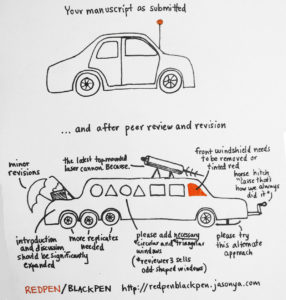 Be professional. Reviewing is a core part of working in academic research, so do it well. (Besides, your own papers need reviewing—maybe by the authors upon whom you’re passing judgement.) Part of being professional is taking the time to draft and revise your review before you send it in.
Be professional. Reviewing is a core part of working in academic research, so do it well. (Besides, your own papers need reviewing—maybe by the authors upon whom you’re passing judgement.) Part of being professional is taking the time to draft and revise your review before you send it in.- Understand your role. You are a consultant to the editor. Your job is to evaluate the rigor and originality of the science and the clarity of the writing, not to assess potential impact. (Impact comes with time.)
- Be helpful. Suggest changes that will improve the paper. But also be realistic about suggesting additional experiments or other work. Not every nit needs to be picked. Don’t be Reviewer 2. And try not to wind up here.
- Be organized and clear. The authors need to understand what needs improvement. It’s helpful to number your points and refer to line and page numbers.
- Don’t include value-laden adjectives (“terrible,” “crazy”) and try to avoid referring to “the authors”; instead say “the work,” “the data,” etc. Remember how everyone tells you not to take reviews personally? This helps the authors whose paper you’re reviewing do that.
Further Resources
Cell advice to reviewers
Nature advice to reviewers
From Science Careers: How to review a paper (many senior faculty share how they do it)
The journal you’re reviewing for almost certainly has advice to reviewers online somewhere; if you didn’t receive a copy or a link from the editor, google it up.
This article was written by Rebecca Helton of Edge for Scholars based on a talk hosted by the ASPIRE program.
 Sentence after sentence in passive voice is wordy, invites errors such as dangling modifiers, and grates on readers’ nerves. Use of active voice improves even science writing.
Sentence after sentence in passive voice is wordy, invites errors such as dangling modifiers, and grates on readers’ nerves. Use of active voice improves even science writing.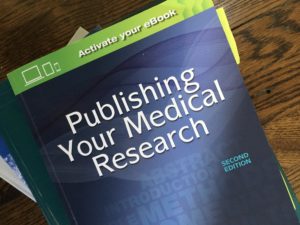 Publishing Your Medical Research, 2nd Edition reveals the secret sauce for maximizing the palatability of your manuscript submissions.
Publishing Your Medical Research, 2nd Edition reveals the secret sauce for maximizing the palatability of your manuscript submissions.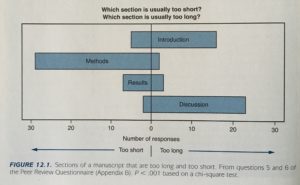 This data from inside the peer review machine is the key ingredient well-paired with practical guidance about how to avoid mistakes at each step from the initial design and implementation of research through reply to reviewers.
This data from inside the peer review machine is the key ingredient well-paired with practical guidance about how to avoid mistakes at each step from the initial design and implementation of research through reply to reviewers.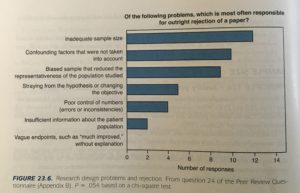


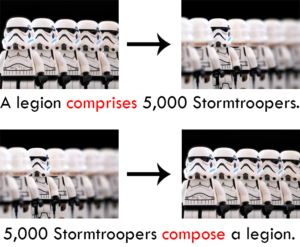

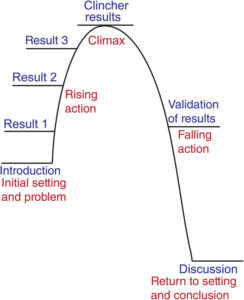
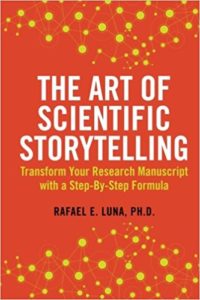 Additional Resources:
Additional Resources: